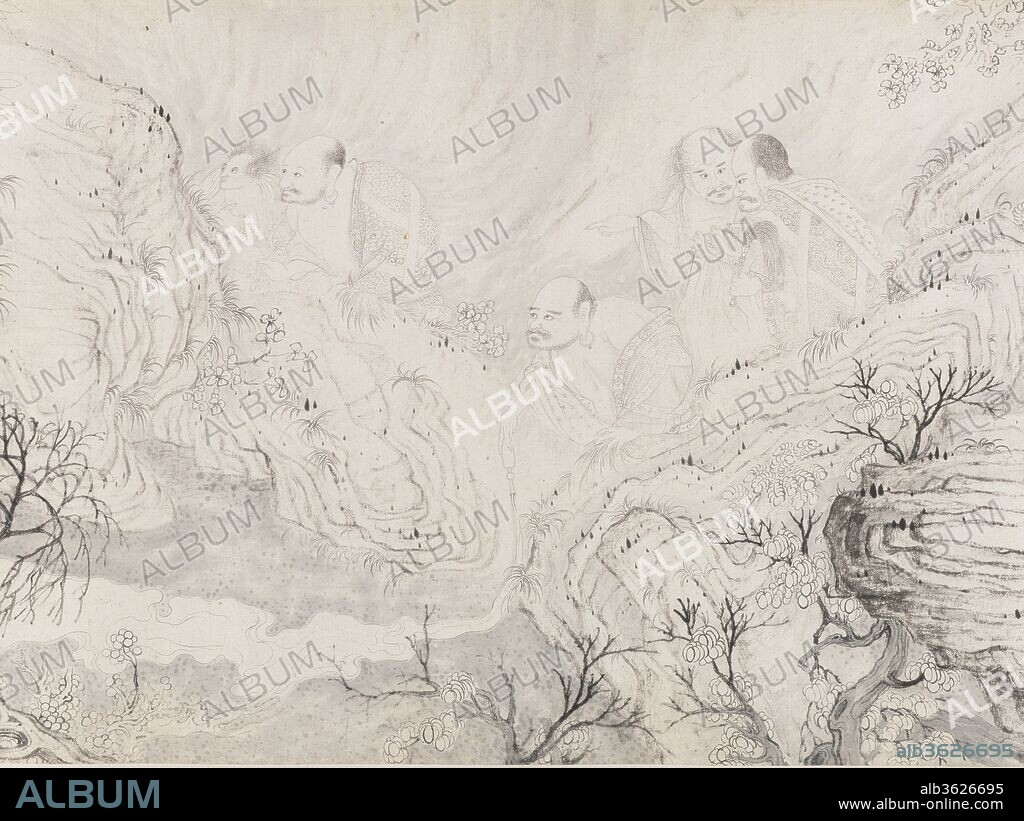alb3626695
SHITAO (ZHU RUOJI). The Sixteen Luohans

|
Add to another lightbox |
|
Add to another lightbox |



Buy this image.
Select the use:

Author:
Title:
The Sixteen Luohans
Caption:
The Sixteen Luohans. Artist: Shitao (Zhu Ruoji) (Chinese, 1642-1707). Culture: China. Dimensions: Image: 18 1/4 x 235 3/4 in. (46.4 x 598.8 cm)
Overall with mounting: 22 5/16 x 895 in. (56.7 x 2273.3 cm). Date: dated 1667.
Shitao, born Zhu Ruoji, a scion of the Ming imperial family, escaped death in his youth by taking refuge in the Buddhist priesthood. In 1662 he became a disciple of the powerful Chan (Zen) master Lü'an Benyue (d. 1676). In the late 1660s and 1670s, while living in seclusion in temples around Xuancheng, Anhui Province, he taught himself to paint.
In The Sixteen Luohans, Shitao's earliest major extant work, the young painter, then twenty-five, drew what are possibly the most effective figures since the Yuan period (1279-1368). A rare religious subject for Shitao, known for his visionary landscapes, the scroll depicts the sixteen guardian luohans (saints) ordered by the Buddha to live in the mountains and protect the Buddhist law until the coming of the future Buddha.
Stylistically, the immediate sources for Shitao's figures were late Ming painters, such as Ding Yunpeng (1547-ca. 1621) and Wu Bin (act. ca. 1583-1626). Unlike Wu Bin's luohans, which seem to be merely grotesque caricatures, Shitao's are carefully observed, showing such thoroughly human qualities as humor and curiosity.
Technique/material:
Handscroll; ink on paper
Period:
Qing dynasty (1644-1911)
Museum:
Metropolitan Museum of Art, New York, USA
Credit:
Album / Metropolitan Museum of Art, NY
Releases:
Model: No - Property: No
Rights questions?
Rights questions?
Image size:
4200 x 3151 px | 37.9 MB
Print size:
35.6 x 26.7 cm | 14.0 x 10.5 in (300 dpi)
Keywords:
 Pinterest
Pinterest Twitter
Twitter Facebook
Facebook Copy link
Copy link Email
Email
